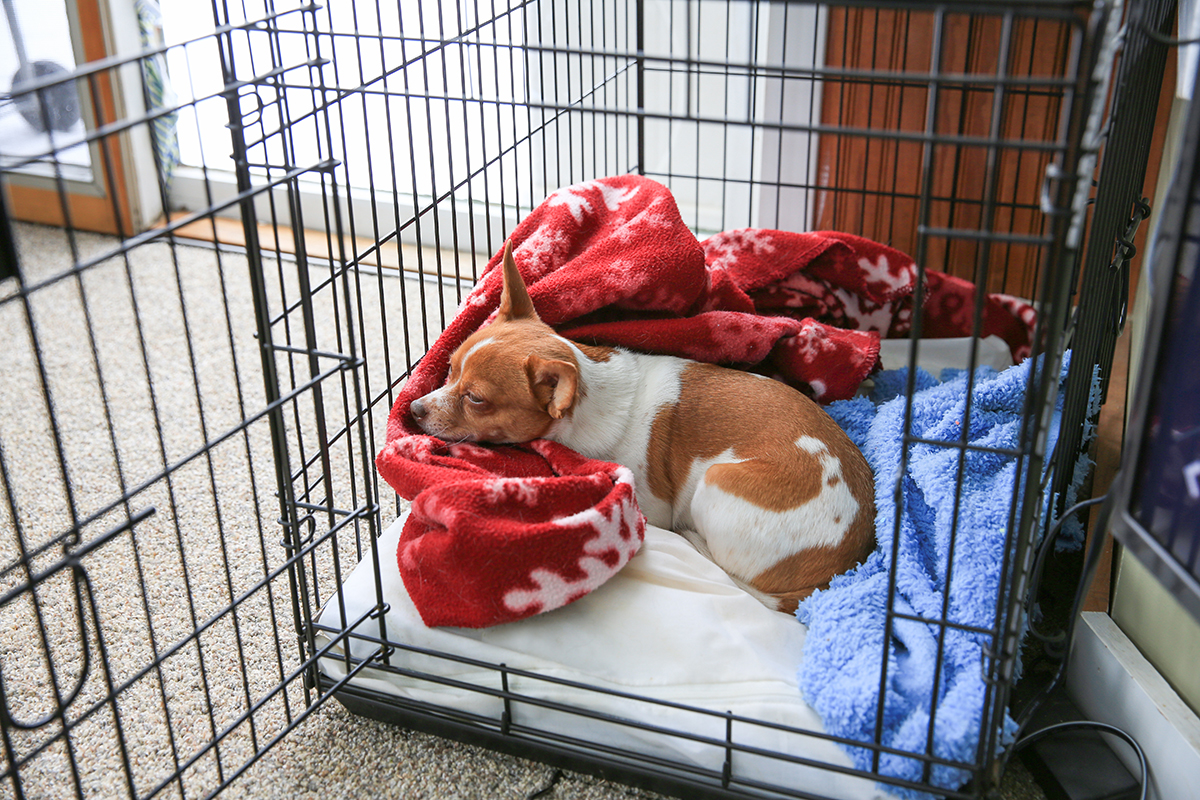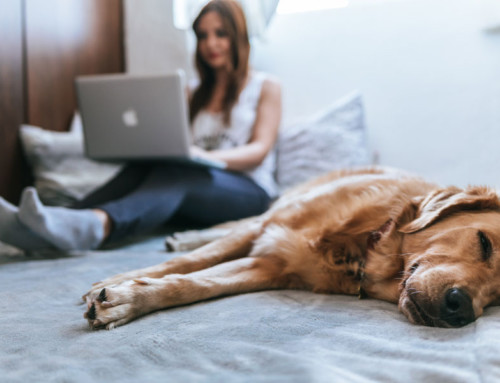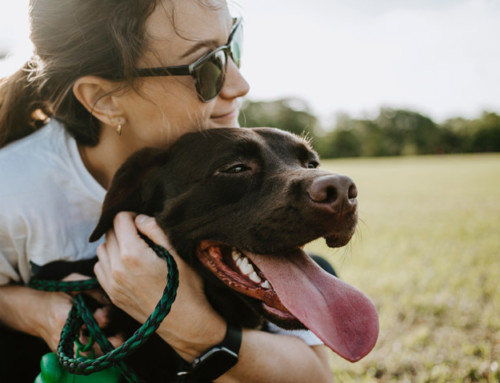Crate training can be an effective method for behavioural control over both adult dogs and puppies. It will teach your dog house boundaries, make it easier to transport them long distances, and safely secure your furry friend after surgery or illness.
Follow these tips to crate train your dog, while still remembering that every dog is different and that they all learn at their own pace.
What type of crate should I get?
Dog crates come in three basic categories:
- Hard plastic crates: You most commonly see these used in air transportation or for smaller dogs.
- Collapsible metal wire pens: The most popular type of crate around the home, they come in a variety of sizes.
- Collapsible fabric crates: A softer type of crate suitable for smaller, calmer dogs.
Each has their advantages depending on your intended use, however fabric crates should be avoided if you think your dog will scratch, claw or gnaw on the materials. Shop around and see which you think would be most comfortable for you and your dog.
How big should my dog’s crate be?
Choosing the right sized crate is easy. If you have a puppy, consider roughly how large he or she will be when they are fully grown. Dogs grow up fast, so there isn’t really a need to purchase a puppy sized version if you’ve got a large dog. You’ll want your adult dog to be able to:
- Stand up comfortably in the crate
- Turn around easily and face any direction while in the crate
- Lie down comfortably in any position.
You’ll also want the crate to fit neatly in your house, in a room that is social and not isolated from the rest of the family.
Crate training: A step by step guide
Follow these 4 steps to successfully crate train your dog.
1) Introducing your dog to the crate: In the early phases of crate training, you want to let your dog take the initiative, and find the crate a rewarding and happy place to be. To start with:
- Place the crate in a central, social area of the house.
- Make it comfortable with blankets, bed, toys etc.
- Let your dog go over and inspect the crate. Reward with treats for doing so.
- Place treats inside the crate to encourage more inspection.
- Reward entering the crate with verbal encouragement and treats as needed
- Avoid closing the crate door in this early stage.
2) Feeding your dog inside the crate: Feeding your dog while inside the crate builds trust and comfort for your pooch. Don’t be too concerned if it takes a while for your dog to become truly comfortable, just follow the step by step process:
- Place your dog’s meal in a bowl inside the crate, encourage them to enter and eat.
- Once they are comfortable, encourage them to enter at meal time then place the food in afterwards.
- Now they are comfortable, try closing the door while they eat, and opening it before they finish.
- Gradually leave the door closed for longer. Eventually, your dog will comfortably stay in their crate after a meal.
- Remember: Each dog is different, and some might take longer than others. If your dog whines, wait until after he or she has stopped, then reward them or let them out.
3) Extending crate time: Now that your furry friend is comfortable inside their crate during meal times, you can start extending the time they spend in the crate. Associate commands like ‘crate’, ‘sleep’ or ‘bed’ with the crate and use treats to reinforce this association. When closing the door, sit by the crate for a few minutes as they adjust. Reward calm behaviour and you’ll be well on your way.
4) Overnight in the crate: Building on the success of your crate training, overnights in the crate should be fairly easy. Ensure your dog can be comfortable for extended periods, that there’s a bed and sufficient toys or a treat dispenser to make them happy. You may need to let them out for toilet breaks overnight, particularly if they are puppies or a bit older.
How long is too long?
While the objective of crate training is to get your dog comfortable with spending time in the crate, they can potentially spend too much time in there. Your dog needs to move around, stretch their muscles and be active. So never lock your dog in a crate for extended periods of time and ensure they have opportunities to go to the bathroom regularly.
I feel like a crate is a prison. I don’t want to use one!
It’s very common for new pet owners to look at a dog crate and think ‘I wouldn’t want to sit in that!’ While dogs are our best friends, they have different needs and perceptions to us. A properly sized crate that is comfortable for your pet will provide a safe space where they can go for some personal time. Just like humans, dogs sometimes want to be on their own, and there are times when we might want to keep our dog isolated (such as transport, visiting children etc).
How to deal with whining
It’s important to remember that dogs associate interactions as positive. Responding to whining with interaction will be seen as a reward, even if you’re chastising them. Instead, try to ignore whining and see if they’ll calm down.
In younger dogs, whining can be a signal that your dog need to pee. If so, put them on leash and take them to pee then straight back to the crate. Avoid interaction or playing with your dog and continue with your training. It won’t be long until your dog is happy spending time in their crate whenever they need it.







Leave A Comment